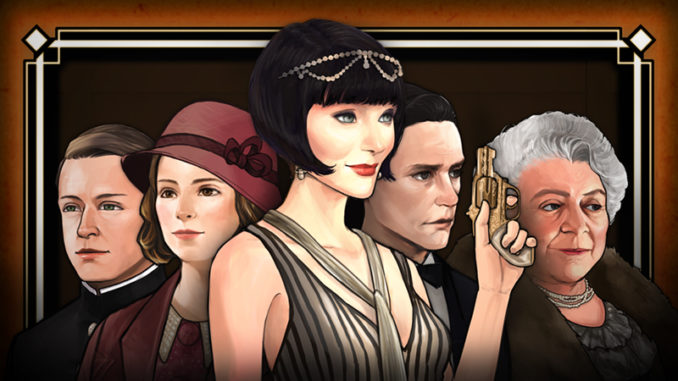
“Miss Fisher’s Murder Mysteries†is a critically-acclaimed Australian detective show, and was praised for its witty dialogue and intriguing episodic stories. “Miss Fisher and the Deathly Maze†feels like a weak episode of a basic detective show, but its greater problems lie in its lack immersion.
This visual novel takes on two episodes of a mystery revolving around the murder of an opera singer. It’s obvious that GameBookAdventures was trying to follow the formula of a TV show with this concept, but the fact these two episodes are directly linked makes it feel redundant. You take control of Miss Phyrne Fisher to solve the murder of aforementioned opera singer, Helen Silcox. The story is fundamentally formulaic and utilizes archetypes in a one-dimensional light. James, Helen’s co-star, is an aggressive boxer, so you can expect him to be aggressive for the rest of the story. Mrs. Winters, the opera’s director, is a strict brute with a stern authoritative attitude, so you can expect HER to be this for the rest of the story. Any good story will take you on a roller-coaster of dynamic characters and story elements, and this, unfortunately, felt like a 20mph car ride through the city. This is tied with the only other gameplay mechanic besides asking questions: deduction.
If you’ve ever played any of the “Ace Attorney†games, you’ll have experienced deduction that takes legitimate conclusion-making skills. Deduction in “Deathly Maze†requires you to take two clues that are recently given to you and combine them to create a plot device. Not only are the deductions painfully obvious, but they are also telegraphed every time. The game practically shouts when to use this mechanic and what to combine, so there’s no room for thinking on the player’s part. Visual Novels aren’t the most engaging genre of games, but a good visual novel entails choice-making that can either hurt or change the story altogether. There is a lack of consequence in this incredibly linear story, and as a result, it can make for an unfortunately boring experience.
The game’s elegantly crafted backdrops makes for some visually appealing artwork. This is especially apparent in locations that take place in bedrooms, such as Fisher’s and Winter’s. The use of lighting and opacity configurations on certain set pieces makes for an impressive line of paintwork.The textures are convincingly life-like in terms of physics; you can tell which lines of fabric are silk or cotton-like just by the way it’s painted. As for the character models, their faces seem to accurately portray their real-life counterparts. If they’re brand new characters created by the developers, they still look impressively human. Some of the limbs, however, could have been worked on a bit more, most noticeably the lack of detail and realism in the arm movements. There are a few typos a well, which can easily take away any immersion you could have potentially had.
Playing “Miss Fisher and the Deathly Maze†can be best described as watching a disengaging TV show, except you have to press the menu button on your remote in order for the characters to continue talking. It isn’t immersive enough to be a fully-fledged game and its artwork only barely holds up the game’s overall creativity scale.
Pros
-Expertly painted backdrops
-Nice 1920’s atmosphere
Cons
-Too linear as a visual novel
-one-faced characters
-sloppy dialogue
-Telegraphed deductions; thinking not required
Final Thoughts
Miss Fisher and the Deathly Maze takes the term “visual novel†a bit too literally. There isn’t enough play in this self-proclaimed detective game, and the story isn’t interesting enough to properly follow.

Leave a Reply